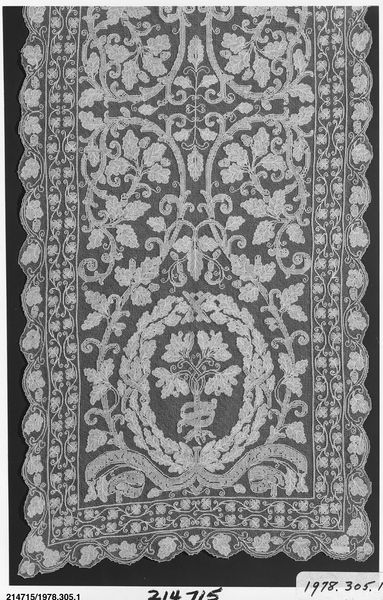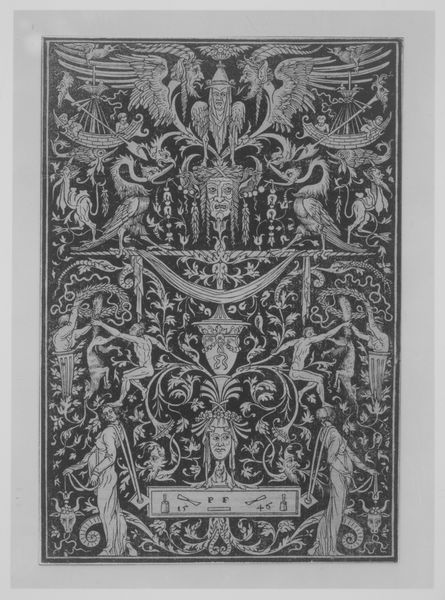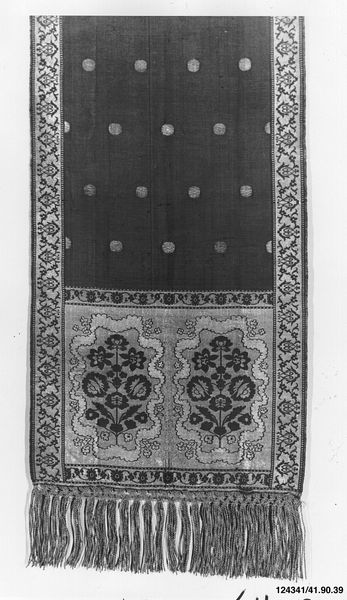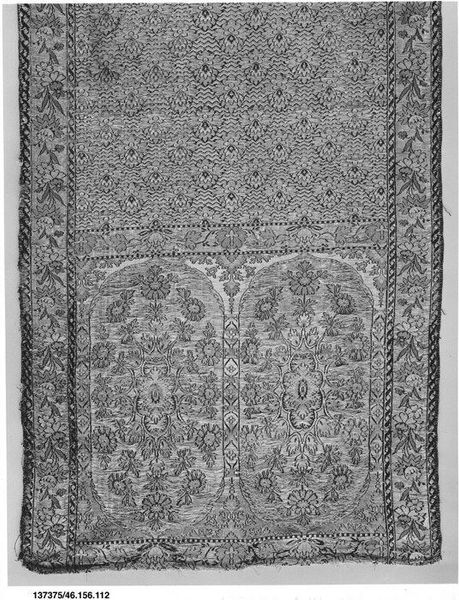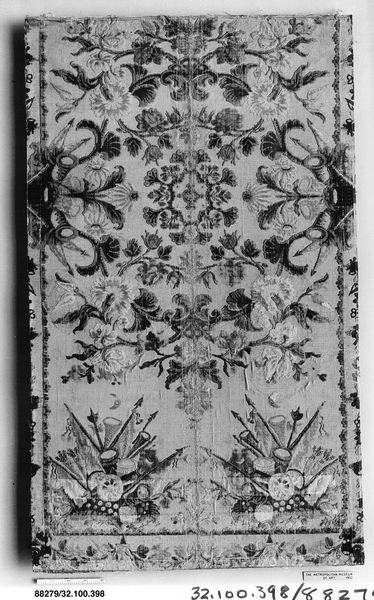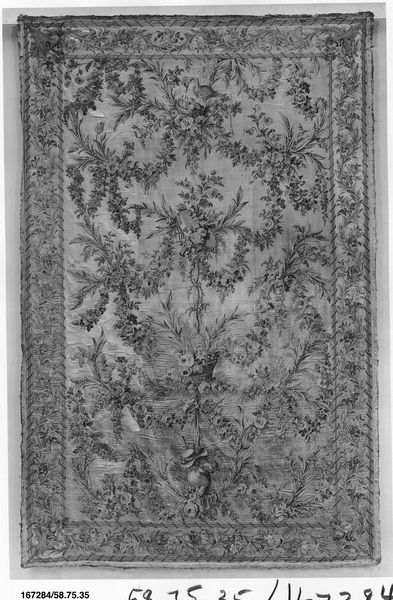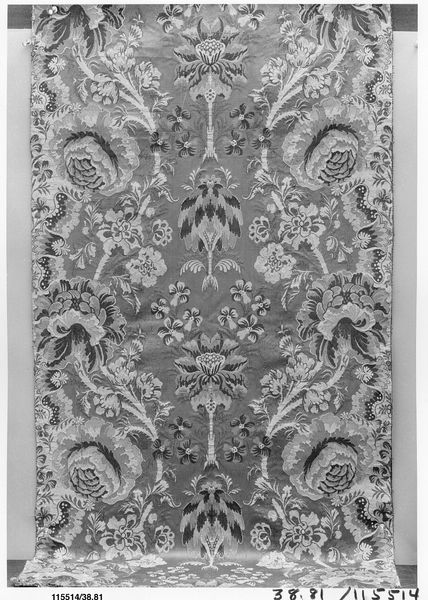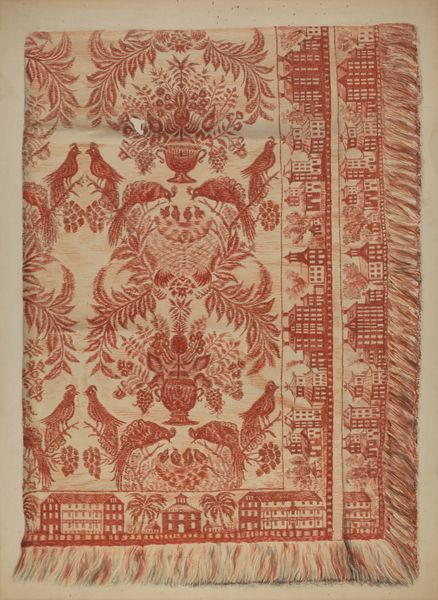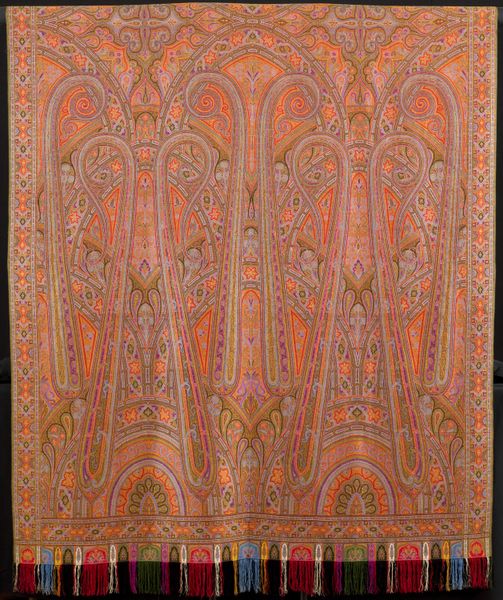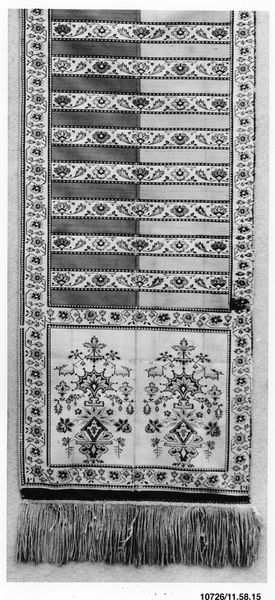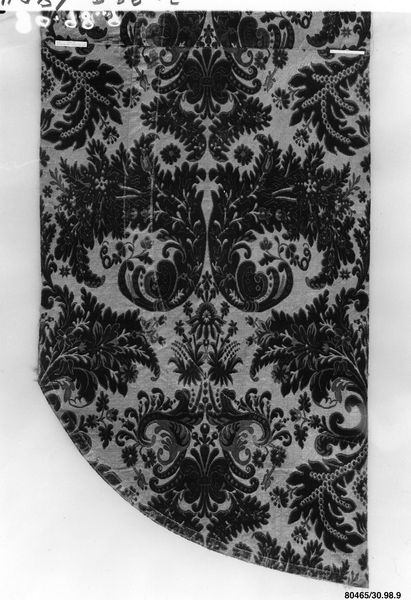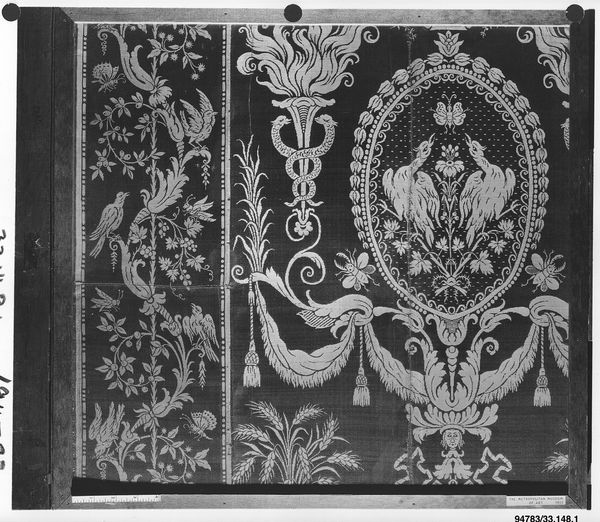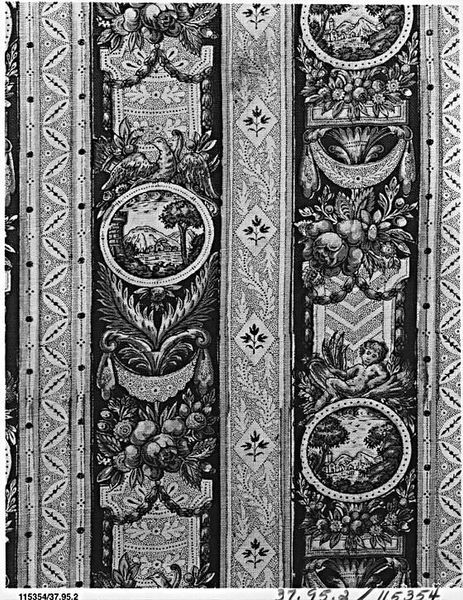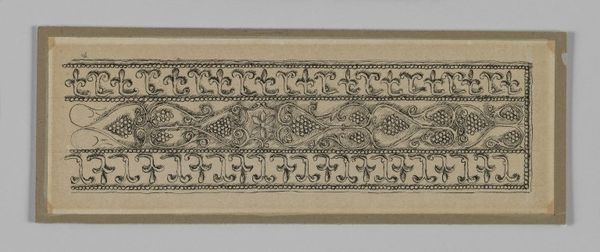
weaving, textile
#
weaving
#
textile
#
decorative-art
Dimensions: L. 141 1/2 x W. 62 1/2 inches (without fringe) (359.4 x 158.8 cm)
Copyright: Public Domain
This shawl was made in the 19th century by M. Pin. It exemplifies the global trade in luxury goods that defined the era. The intricate paisley pattern, not native to Europe, became a coveted symbol of status. It reflects the complex interplay between European markets and the artistic traditions of Kashmir. This particular example depicts the shrines of the Mughal empire. These were in decline at this point in history, suggesting a sense of the past, of history and cultural change, becoming incorporated into the commodity itself. To fully understand the cultural impact of such textiles, we turn to trade records, fashion journals, and museum collections. These sources allow us to piece together the story of how objects like this shawl mediated cultural exchange and shaped social identities. Approaching art through its historical context reveals the dynamic relationship between artistic expression and the larger world.
Comments
No comments
Be the first to comment and join the conversation on the ultimate creative platform.
